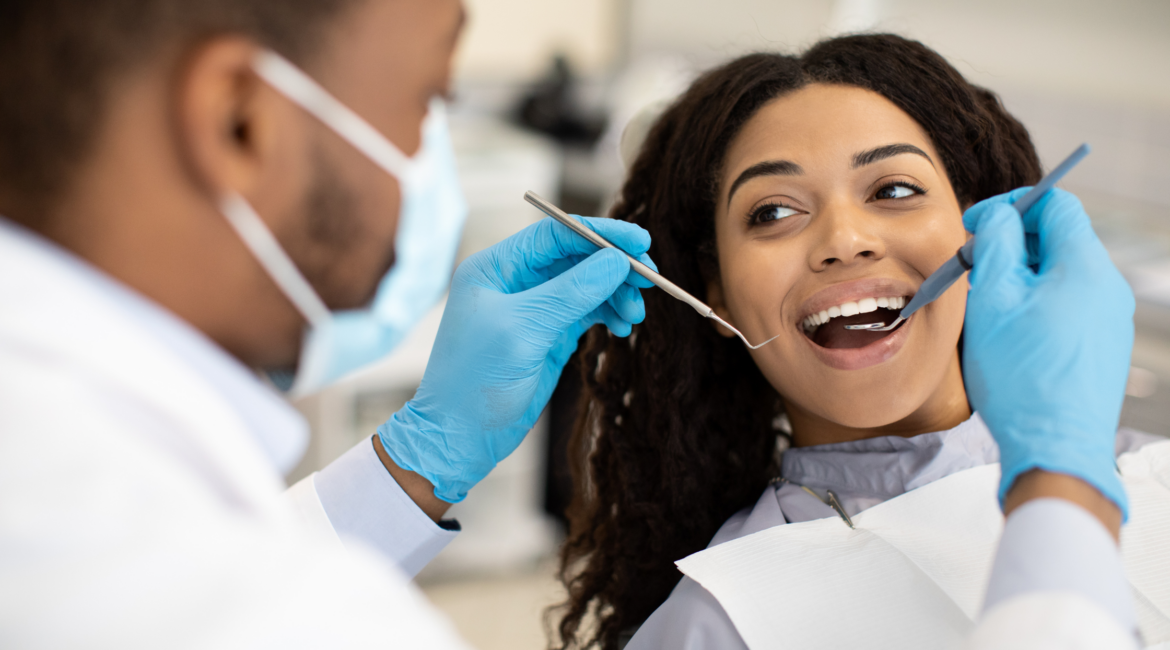Dentistry has seen a transformative evolution in the last ten years, driven by technological breakthroughs, improved materials, and a better understanding of oral health.
These advancements have enhanced precision, patient comfort, and the effectiveness of treatments.
Here’s a look at the most significant innovations that are shaping the future of dental care.
1. Digital Dentistry and 3D Technology
Revolutionizing Diagnostics and Treatment
Digital dentistry encompasses the use of computer-aided technology in various aspects of dental care. Intraoral scanners and cone-beam computed tomography (CBCT) have replaced traditional methods, offering greater precision and reducing patient discomfort.
Intraoral Scanners: These devices create detailed 3D images of a patient’s mouth, eliminating the need for messy impression molds and improving diagnostic accuracy.
CBCT Imaging: CBCT provides 3D imaging for detailed diagnostics, particularly useful in implant planning and identifying complex dental issues.
3D Printing in Dentistry
3D printing has become a cornerstone in dental laboratories and clinics. It enables the rapid creation of crowns, bridges, dentures, and even orthodontic devices with unparalleled accuracy, saving time and reducing costs.

2. Laser Dentistry
Laser technology has brought precision and reduced invasiveness to dental procedures.
Dentists now use lasers for various treatments, including:
Gum Surgery: Lasers can reshape gums and remove diseased tissue with minimal bleeding and faster healing.
Cavity Treatment: Lasers allow dentists to remove decay without the need for traditional drilling, reducing pain and anxiety for patients.
Teeth Whitening: Laser-assisted whitening offers quicker and more effective results.
Laser dentistry enhances patient comfort and improves outcomes by minimizing tissue damage and post-operative discomfort.
3. Dental Implants: Improved Materials and Techniques
Dental implants have long been a reliable solution for replacing missing teeth. Over the past decade, advancements in implant technology have significantly improved their success rate and patient satisfaction.
Biocompatible Materials: The use of zirconia and other biocompatible materials has reduced the risk of allergic reactions and improved aesthetic outcomes.
Guided Implant Surgery: Digital tools now enable dentists to plan and place implants with pinpoint accuracy, reducing complications and healing time.
These innovations ensure that dental implants look and function like natural teeth, offering patients a durable and comfortable solution.
4. Advances in Orthodontics
Orthodontics has evolved significantly, with new technologies making treatments faster, less noticeable, and more comfortable.
Clear Aligners: Products like Invisalign have revolutionized orthodontic care by offering a nearly invisible alternative to traditional braces. Advances in aligner technology allow for precise movement of teeth and shorter treatment times.
Self-Ligating Braces: These braces use a sliding mechanism instead of traditional elastic ties, reducing friction and the need for frequent adjustments.
Patients now have more options to achieve straight, healthy smiles with greater convenience.
5. Artificial Intelligence (AI) in Dentistry
AI is transforming how dentists diagnose and treat oral health conditions. Machine learning algorithms analyze dental images to identify cavities, gum disease, and other issues with remarkable accuracy.
Diagnostics: AI systems assist dentists by flagging potential issues in X-rays and other imaging.
Treatment Planning: AI-based software helps in designing custom orthodontic and restorative solutions, improving precision and efficiency.
AI is also being used to predict patient outcomes and personalize treatment plans, ensuring better results.
6. Minimally Invasive Dentistry
Minimally invasive techniques have become a central focus in modern dentistry, emphasizing the preservation of natural tooth structure and reducing discomfort.
Air Abrasion Technology: This technique uses tiny particles to remove decay without the need for drilling.
Preventive Sealants: New materials allow for better protection against cavities without extensive preparation.
These methods prioritize patient comfort and long-term oral health while reducing the need for extensive restorations.
7. Regenerative Dentistry
One of the most exciting areas of dental innovation is regenerative dentistry, which focuses on the body’s ability to heal and regenerate tissues.
Stem Cell Research: Researchers are exploring ways to use stem cells to regrow dental tissues, including dentin and even entire teeth.
Biomimetic Materials: These materials mimic natural tooth structures and encourage remineralization, offering alternatives to traditional fillings.
While still in its early stages, regenerative dentistry holds incredible promise for the future.
8. Teledentistry
The rise of telemedicine has extended to dentistry, allowing patients to consult with dental professionals remotely.
Virtual Consultations: Patients can discuss symptoms and receive advice without visiting the clinic.
Remote Monitoring: For orthodontic patients, teledentistry enables dentists to track progress and make adjustments remotely.
Teledentistry increases accessibility and convenience, particularly for patients in rural or underserved areas.
9. Improved Dental Materials
Advances in materials science have led to stronger, more durable, and aesthetically pleasing dental restorations.
Resin-Based Composites: Modern composites offer better strength and a natural appearance for fillings and bonding.
Ceramic Restorations: New ceramic materials mimic the translucency of natural teeth while offering exceptional durability.
These materials enhance the longevity and appearance of dental work, ensuring patient satisfaction.
10. Enhanced Patient Comfort with Sedation Techniques
For patients with dental anxiety, advancements in sedation dentistry have made treatments more accessible and less stressful.
Conscious Sedation: New techniques allow patients to remain awake but relaxed during procedures.
Non-Invasive Sedatives: Improved delivery methods, such as nasal sprays, make sedation more convenient and less intimidating.
These options ensure that patients can receive the care they need while mitigating fear and discomfort.

11. Smart Toothbrushes and Wearable Technology
The integration of technology into daily oral care has empowered patients to take better care of their teeth.
Smart Toothbrushes: Devices equipped with sensors provide feedback on brushing techniques and areas missed.
Wearable Devices: Innovations like mouthguards with sensors track nighttime teeth grinding and other habits.
Modern Day Dental | St. Johns, FL
The continued integration of the latest technology promises even more transformative changes, ensuring that dental care remains at the forefront of healthcare innovation.
Whether through 3D printing, laser treatments, or teledentistry, the future of dentistry is brighter, more efficient, and more patient-focused than ever!
If you are seeking expert dental care and are located in or around St. Johns Florida, consult with the experts at Modern Day Dental to help maintain optimal oral health.
We use the latest, cutting edge technology to make dental procedures as smooth, fast and painless as possible.

